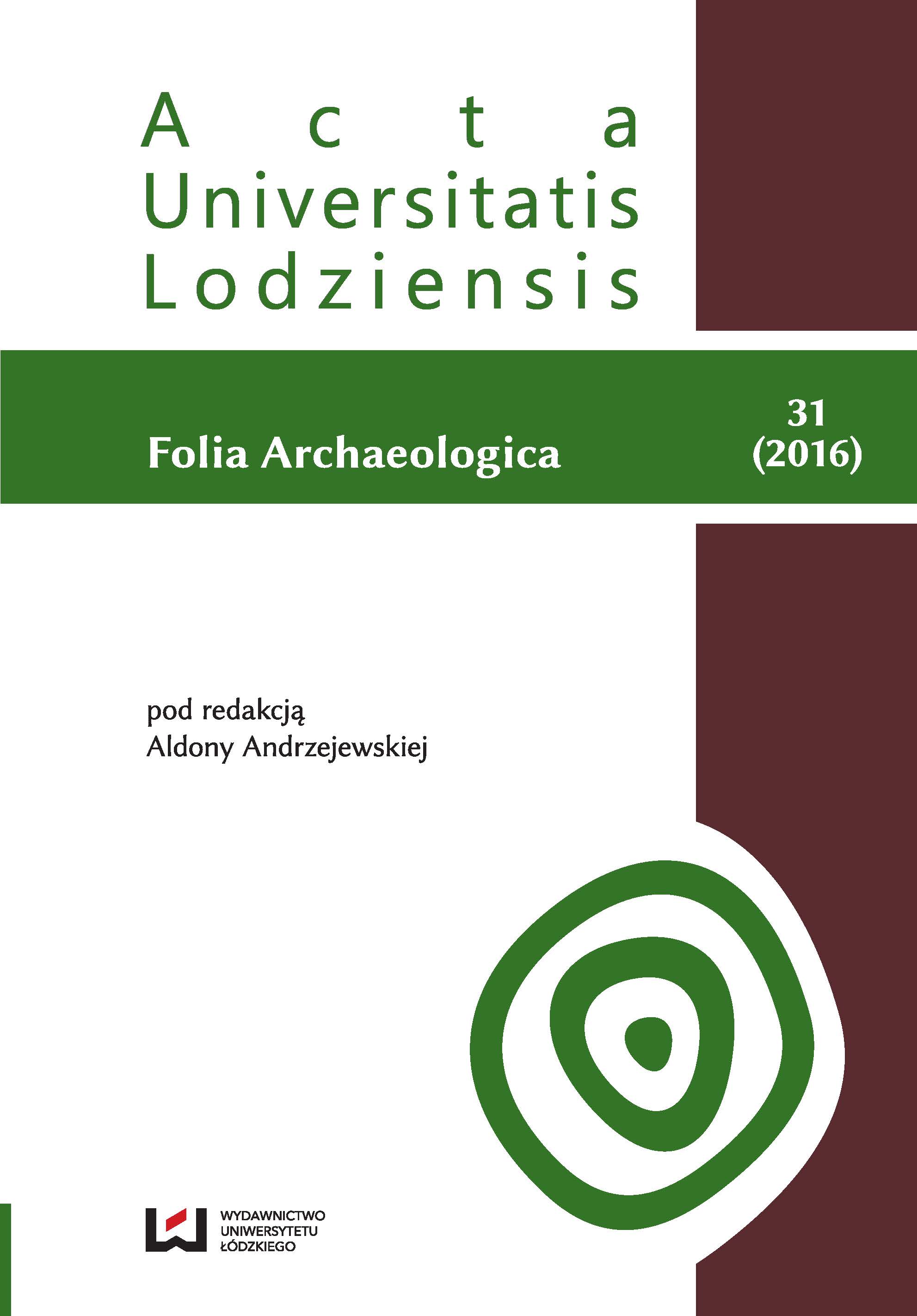Ostrogi krzesłowate w okresie wpływów rzymskich – stan i potrzeby badań
Chair-shaped Spurs in the Roman Iron Age – The State and Prospects of Research
Author(s): Emilia Smółka-AntkowiakSubject(s): Archaeology, Military history, Ancient World
Published by: Wydawnictwo Uniwersytetu Łódzkiego
Keywords: Roman Iron Age; early Pre-Roman Iron Age; spurs; chair-shaped spurs; Celts; Treveri; Elbe Germanic; Wielbark culture; Przeworsk culture; bow-shaped spurs
Summary/Abstract: In the Roman Iron Age can be observed the development of spurs production by the barbarian communities in Central Europe. Spurs were disseminated by Celts, then were gladly used and modified by local people. Their initial form were certainly bow-shaped spurs. But there were also chair-shaped spurs, which were derived from bow-shaped form. Through the work of numerous researchers we have more and vaster, but still incomplete knowledge about these monuments. With a high degree of certainty we can talk about development of forms of these monuments. Their development from bow-shaped forms perfectly shows spurs with three circular plates, so called Dreikreisplattensporen. First items of this type come from the fifth / fourth decade of the first century BC, which makes them the oldest form of rivet spurs. Their genetic zone is connected with area occupied by the Celtic tribe of Treveri. They are therefore not, as previously thought, germanic, but celtic product. However, thanks to the Elbe Germanic these spurs disseminated in the area covered by the settlement of tribes belonging to the Germanic circle of civilization. However, must be noted that in Treveri area at the same time we have to deal with three wholly distinct communities – Terveri (Celts), Suebi (Germans) and Romans. So it is not obvious who had the idea to initiate production of rivet spurs. Detailed analysis of these early forms of spurs, could bring measurable effects for our understanding of real origin of this monuments. It could also help to point trails which these monuments were further redistributed into the Germanic zone, and thus also the areas of the Polish lands. From the land occupied by the Przeworsk culture, there are two specimens of so called Dreikreisplattensporen, from Korytnica, grave 4 and Zakrzewo, grave 14. They can be classified as a Geoblingen-Thür type by Bockius. They are found mainly in Treveri area, but similar also occur in the area of the Grossromstedt culture. Here are considered as the imitation rather than Celtic import. The issue of provenience of these spurs is still unresolved. In the Roman Iron Age significantly increased the number and diversity of chairshaped spurs produced in the Germania Magna. Their development during this period is no doubt related to the germanic communities, which inhabited the area extending along an axis running from the Jutland Peninsula to the Elbe River basin, where these monuments are the most common. An interesting phenomenon is the presence of imitation parts of chair-shaped spurs observed in the bow-shaped spurs. Such similarity is visible between the chair-shaped spurs with highly separate prick and bow-shaped spurs of Wielbark culture. In conclusion, currently, despite the existence of several separate classifications of chair-shaped spurs, using them is significantly hampered. These difficulties are due to e.g. no longer current findings. This is caused by increase of data base or deficiencies such as the presentation of incomplete catalog. Difficulties in classifying stem not only from restrictions on the use of existing typologies, but also from a large variety of chairshaped spurs. Correct classification of these monuments, the ability to precisely determine their chronology and the creation of their full catalog is the basis for comprehensive research, covering the entire area of distribution of chair-shaped spurs. They would give the opportunity to lead the direction of the distribution of spurs; trails, which reach among others on the Polish lands. This research would show the directions of interregional contacts. Next step would be thinking of which social processes led to the dissemination of this type of findings on the Elbe and southern Scandinavia areas and further spreading of such spurs in the East.
Journal: Acta Universitatis Lodziensis. Folia Archaeologica
- Issue Year: 2016
- Issue No: 31
- Page Range: 19-34
- Page Count: 16
- Language: Polish

